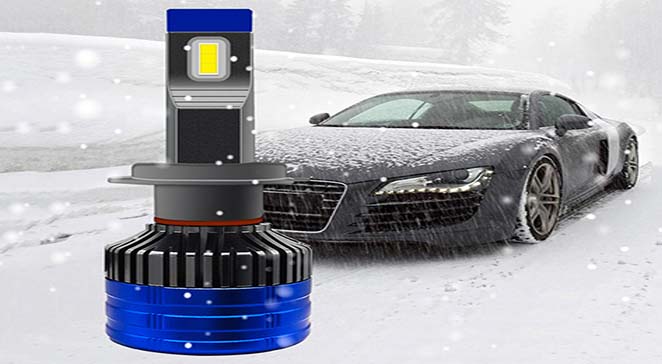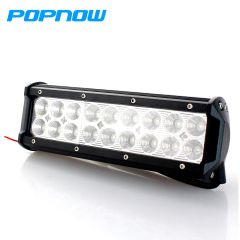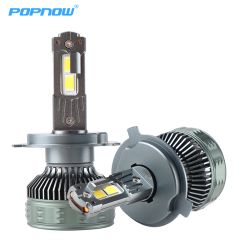Nighttime driving these days can turn into a dazzling — even blinding — light show from the different types of headlights available on newer vehicles. The familiar warm, yellow glow cast by halogen bulbs is rapidly being replaced by brighter and whiter light-emitting diodes and even brighter high-intensity-discharge lights filled with xenon gas. What’s the difference between these two types of headlights?
LED Headlights
In automotive applications, LEDs have a distinctive white color and are brighter than halogen lights, though they usually aren’t as bright as xenon lights. Because they’re small, LEDs can be squeezed into tight spaces and arranged in a variety of patterns, giving vehicle engineers and designers more leeway to be creative.
With LEDs, electric current passes through a semiconductor (or diode) to produce light that is brighter and often has a wider beam pattern than other types of headlights. LEDs are about 90% more efficient than incandescent bulbs and generate less heat. LEDs last longer than either halogens or xenon light, though they become dimmer as they age.
LEDs are becoming the dominant type of headlight because they use less energy than other types of lights, they last longer and they keep getting cheaper to manufacture.
Xenon Headlights
Xenon high-intensity-discharge headlights have bulbs, but unlike halogen lights, they don’t have filaments so they tend to last longer than halogens but not as long as LEDs. They use less energy than halogens and more than LEDs. They also are hotter than LEDs and become dimmer over time.
In an xenon headlight, electric current passes through the xenon gas to create an arc between two electrodes and generate intense white or bluish light that is often brighter than LEDs. Aftermarket xenon lights are available in different shades of blue and yellow as well as white.
On dark roads, some xenon lights are so bright that even the low beams can blind oncoming drivers. To compensate, cars with xenon lights often have leveling systems that automatically adjust the beam pattern when the lights are turned on.
LEDs and xenon lights initially were offered only on luxury and higher-priced vehicles, but today they are more widely available, especially LEDs. Some manufacturers have made LEDs standard across their entire range of moderately priced vehicle lines. Xenon lights are offered on fewer new vehicles but remain popular in the aftermarket.
LED Headlights, HID LED headlights, Which Is Better?
That’s hard to say, because the type of lighting isn’t the only factor in how well headlights perform. The Insurance Institute for Highway Safety, which evaluates headlights in its safety ratings, says many factors affect performance: the design of the headlight assembly, the reflectors or projectors that direct the light down the road and how well the headlights are aimed.
The IIHS rates headlights as good, acceptable, marginal or poor based on how far they reach on straight roads and on left and right curves as well as how well they light both sides of roads.
LEDs generally perform better than other types in the IIHS test, but equipping a vehicle with either LEDs or xenon lights doesn’t mean they will receive the highest score or outperform halogen headlights.
For example, the 2021 Chevrolet Traverse with LED headlights was rated acceptable, and a Traverse with xenon headlights was rated poor. The 2020 Toyota Sienna was rated acceptable when equipped with either xenon or halogen headlights.






